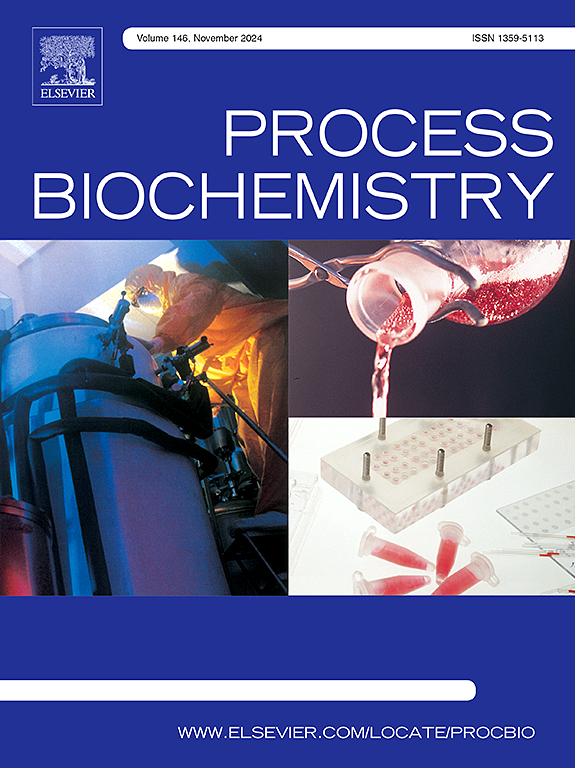Optimization of operating parameters for pyrite-based electrochemical bioreactor using response surface methodology: C/N ratio, current density, and hydraulic retention time
IF 3.7
3区 生物学
Q2 BIOCHEMISTRY & MOLECULAR BIOLOGY
引用次数: 0
Abstract
This study optimized three important influence factors of C/N ratio, current density (CD), and hydraulic retention time (HRT) using Box-Behnken design and response surface methodology (RSM) for a pyrite-based electrochemical bioreactor (PEBR). Meanwhile, the interactive effects among these factors were investigated. Under the optimal conditions, the NO3--N removal efficiency (NRE) peaked at 95.61 % at an HRT of 12 h, a CD of 483 mA/m2, and a C/N ratio of 3.55. Among these factors, the C/N ratio was identified as the most influential factor affecting NRE. Under the optimal conditions, Proteobacteria (43.36 %), Campylobacterota (11.14 %), Bacteroidota (8.00 %), and Desulfobacterota (11.36 %) were the dominant phyla, while Sulfurimonas (7.19 %), Acetobacterium (7.11 %) and Desulfovibrio (7.11 %) became the dominant genera. In addition, the relative abundance of functional genes for sulfur metabolism was enhanced obviously after the operating parameter optimization. These findings can help PEBR achieve high efficiency and low energy consumption for nitrate removal.
响应面法优化黄铁矿基电化学生物反应器运行参数:C/N比、电流密度和水力停留时间
采用Box-Behnken设计和响应面法(RSM)对黄铁矿基电化学生物反应器(PEBR)的C/N比、电流密度(CD)和水力停留时间(HRT)三个重要影响因素进行了优化。同时,考察了各因素之间的交互作用。在最佳条件下,当HRT为12 h, CD为483 mA/m2, C/N为3.55时,NO3——N去除率(NRE)达到95.61 %。其中,碳氮比是影响NRE最大的因子。在最优条件下,变形菌门(43.36 %)、弯曲菌门(11.14 %)、拟杆菌门(8.00 %)和脱硫菌门(11.36 %)为优势菌门,硫单胞菌门(7.19 %)、醋酸菌门(7.11 %)和脱硫弧菌门(7.11 %)为优势菌门。此外,优化操作参数后,硫代谢功能基因的相对丰度明显提高。这些研究结果有助于PEBR实现高效、低能耗的硝酸盐去除。
本文章由计算机程序翻译,如有差异,请以英文原文为准。
求助全文
约1分钟内获得全文
求助全文
来源期刊

Process Biochemistry
生物-工程:化工
CiteScore
8.30
自引率
4.50%
发文量
374
审稿时长
53 days
期刊介绍:
Process Biochemistry is an application-orientated research journal devoted to reporting advances with originality and novelty, in the science and technology of the processes involving bioactive molecules and living organisms. These processes concern the production of useful metabolites or materials, or the removal of toxic compounds using tools and methods of current biology and engineering. Its main areas of interest include novel bioprocesses and enabling technologies (such as nanobiotechnology, tissue engineering, directed evolution, metabolic engineering, systems biology, and synthetic biology) applicable in food (nutraceutical), healthcare (medical, pharmaceutical, cosmetic), energy (biofuels), environmental, and biorefinery industries and their underlying biological and engineering principles.
 求助内容:
求助内容: 应助结果提醒方式:
应助结果提醒方式:


